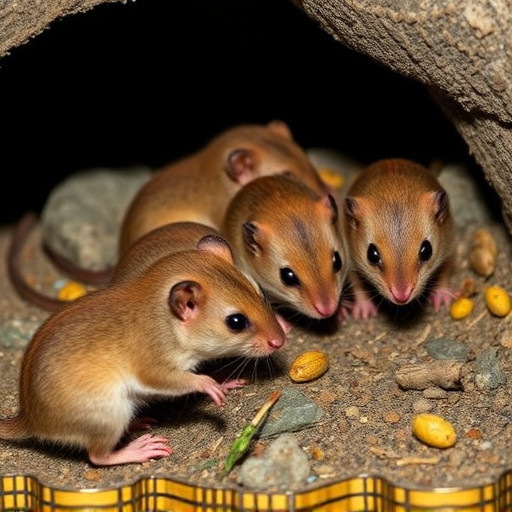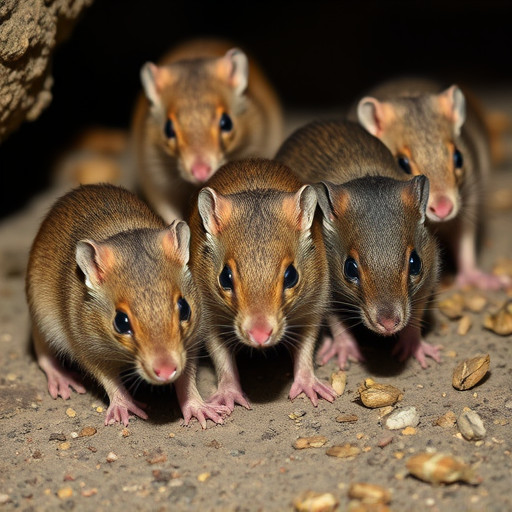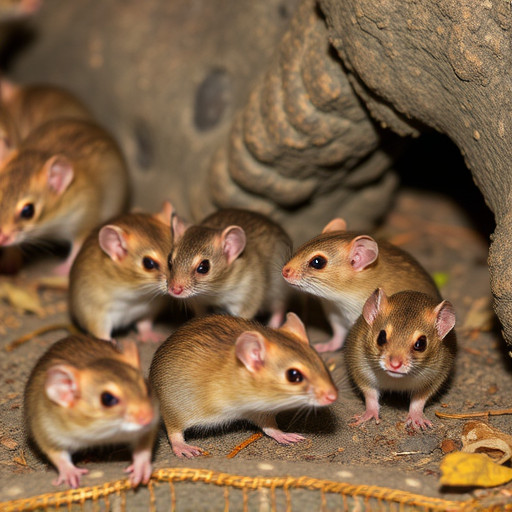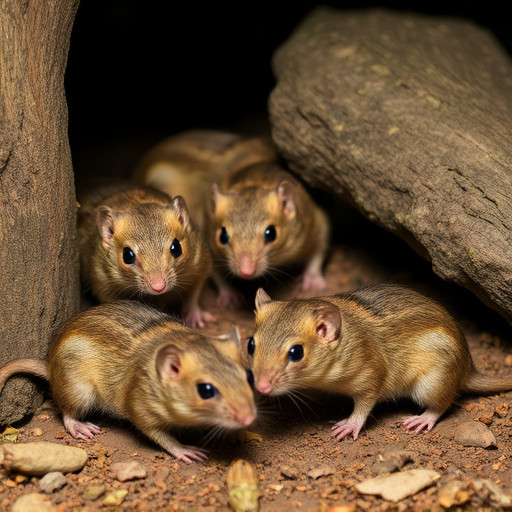Oro Valley, Arizona, faces a dual challenge with both the invasive Pacific Rat (Rattus obsus) and native Deer Mouse (Peromyscus manitensis), requiring effective rodent control Tucson strategies. Habitat selection is influenced by climate, food availability, terrain, and human activities, with rodents attracted to suitable temperatures, shelter, plant life, agricultural fields, and urban food sources. Understanding their daily routines, dietary preferences, seasonal activity patterns, and the allure of urban areas helps develop targeted rodent control Tucson methods. Preventive measures like sealing entry points and secure food storage, along with professional pest control services, are crucial for maintaining a rodent-free environment throughout the year.
In Oro Valley, understanding rodent behavior and habitat preferences is crucial for effective rodent control. This comprehensive guide delves into the diverse rodent species found in the region, factors influencing their habitat selection, and unique behavioral patterns. We explore dietary preferences, seasonal activity fluctuations, and the intricate human-rodent interactions. By understanding these aspects, residents can employ tailored rodent control methods, ensuring a safe and healthy environment in Tucson’s Oro Valley.
- Rodent Species Found in Oro Valley
- Factors Influencing Habitat Selection
- Behavioral Patterns and Daily Routines
- Dietary Preferences and Food Sources
- Seasonal Changes in Rodent Activity
- Human-Rodent Interaction and Control Methods
Rodent Species Found in Oro Valley

Oro Valley, located in the heart of Southern Arizona, is home to a diverse range of rodent species, each with unique behaviors and habitat preferences. Common rodents found in this area include the Pacific Rat (Rattus obsus), also known as the black rat, and the Deer Mouse (Peromyscus manitensis). These species have adapted well to the local environment, thriving in both urban and natural settings.
The Pacific Rat, a highly adaptable invasive species, prefers close proximity to human structures, often nesting in attics, walls, and crawl spaces. They are known for their excellent climbing abilities and can be a significant source of household pests. In contrast, the Deer Mouse, a native species, is more commonly found in grassy fields, forests, and brushy areas, making use of natural shelters like burrows and tree hollows. Rodent control Tucson is a growing concern for homeowners and businesses due to these species’ ability to quickly reproduce and their potential to cause damage to property and spread diseases.
Factors Influencing Habitat Selection

Rodents’ habitat selection is a complex interplay of various environmental factors. In Oro Valley, climate plays a significant role, with rodents favoring areas offering suitable temperatures and shelter from extreme weather conditions. The availability of food is another critical aspect; rodents are attracted to regions with abundant plant life, agricultural fields, or even human food sources, making urban areas attractive habitats.
The terrain’s characteristics also influence habitat preferences. Rodents tend to prefer flatter areas with easy access to cover and hiding spots. In Tucson, the diverse landscape provides various options, from desert flats to more rugged terrain, each attracting different rodent species. Human activities and structures can further modify habitats, creating pockets of suitable environments for rodents, highlighting the importance of understanding these factors in implementing effective rodent control strategies.
Behavioral Patterns and Daily Routines

Rodents in Oro Valley, like many creatures, exhibit distinct behavioral patterns and daily routines that are influenced by their natural instincts and habitat. During the day, they tend to be most active under cover of darkness, utilizing the cooler temperatures and reduced human activity to forage for food. This behavior is a remnant of their wild ancestors who avoided predators by being most active when the risk was lowest. In residential areas, this translates to nighttime expeditions through yards, seeking out seeds, grains, and other food sources left accessible.
Understanding these patterns is crucial for effective rodent control Tucson methods. Homeowners and pest management professionals can employ strategies such as sealing entry points, storing food securely, and using traps or repellents targeted at specific species to disrupt their routines. By recognizing when and where rodents are most active, it becomes possible to implement preventive measures that keep these pests at bay, ensuring a safer, healthier environment for both residents and their pets.
Dietary Preferences and Food Sources

In Oro Valley, as with many regions, rodents’ dietary preferences play a significant role in their habitat choices and overall behavior. These small mammals are omnivores, meaning they consume both plant and animal matter. However, their primary food sources tend to lean heavily towards seeds, grains, fruits, and nuts, especially during the fall and winter months when other sustenance is scarce. This dietary preference makes them a common pest issue for homeowners in Tucson, driving the need for effective rodent control methods.
Oro Valley’s diverse landscape offers various food resources that attract rodents. Local parks, gardens, and even residential areas with lush greenery provide ample opportunities for these creatures to forage for food. During the spring and summer, they often feed on fresh vegetation and insects, while in urban settings, they may rely more heavily on human-provided food sources like garbage or pet food, making them a nuisance in neighborhoods and commercial spaces alike. Understanding their dietary habits is key to implementing successful rodent control strategies in this region.
Seasonal Changes in Rodent Activity

In Oro Valley, like many regions, rodents exhibit distinct patterns in their activity levels throughout the year. During the spring and summer months, when temperatures are milder, rodent control Tucson becomes more challenging as these creatures become more active, seeking food and expanding their territories. This period sees an increase in mating activities and nesting behaviors, leading to higher population densities in some areas.
As fall arrives, and then winter sets in, rodent activity may wane due to cooler temperatures and reduced availability of food sources. However, it’s crucial for residents to remain vigilant as some species may seek refuge indoors during these seasons. Understanding these seasonal changes is essential for effective rodent control strategies, ensuring that homes and properties remain secure throughout the year.
Human-Rodent Interaction and Control Methods

In Oro Valley, as in many urban areas, human-rodent interaction is an ever-present reality. Rodents like squirrels, mice, and rats are attracted to human settlements due to the availability of food sources, shelter, and warm environments. While they can cause significant property damage and pose health risks through their droppings and potential disease transmission, effective rodent control Tucson methods are essential for maintaining a harmonious coexistence.
Rodent control in Oro Valley requires a multi-faceted approach. Property owners and managers should implement preventive measures such as sealing entry points, maintaining clean environments, and storing food securely. Professional pest control services offering rodent control Tucson solutions, including humane traps and targeted treatments, can also be highly effective. Regular inspections and prompt action are crucial to deterring rodents from establishing colonies, ensuring a safer and more comfortable living space for both residents and the local wildlife.
Understanding the behavior and habitat preferences of rodents in Oro Valley is crucial for effective rodent control Tucson strategies. By recognizing the various species, their dietary habits, and seasonal activity patterns, residents can implement tailored prevention methods. Moreover, this knowledge fosters a harmonious coexistence with these creatures, ensuring a safer and more balanced environment for both humans and wildlife. Remember that, by addressing habitat accessibility and choosing appropriate control measures, it’s possible to minimize conflicts while preserving the natural balance in Oro Valley.
